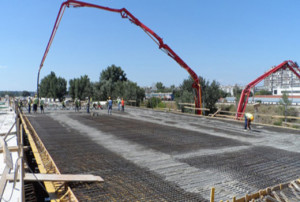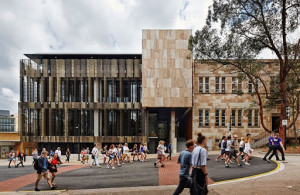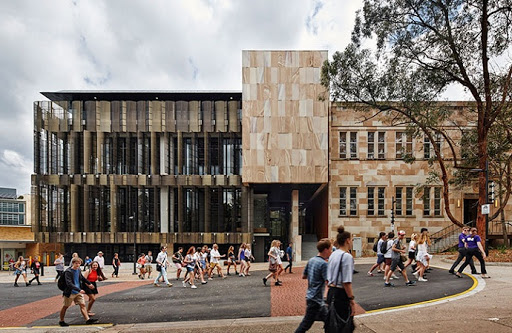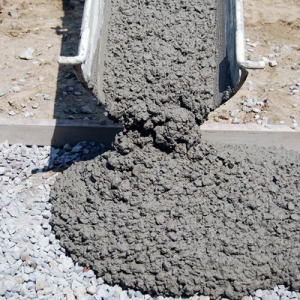Fieldtest: Production and processing of Geopolymer Concrete 07/07/2018 You will see that producing geopolymer concrete… …is not really different from what we are used to. You will find the concreting process to be pretty similar too. That the durability of GPC’s is often regarded to be superior to ‘traditional’ concretes. That the planet may probably benefit… …once we start using more locally available and eco-friendly materials. As a contractor we participate in this field test because we think… …geopolymer concrete provides us with a competitive edge. We see that environmental impact indicators… …are becoming more important to the success rate in every tender. It also helps to alleviate the planet’s burden… …by reducing CO2-emmissions.

It is about listening to what society demands. It is a new type of structural concrete, at least to this part of the world. The basic chemistry is already 110 years old and all it needed… …was some brushing up, because it provides… …certain properties which are suddenly highly appreciated. We are making our products and services more sustainable. Our clients increasingly demand concretes with a reduced CO2-footprint. Simply because they’ve heard that up to 8% of all human-induced CO2-emissions… …are said to originate from the production of cement.
Geopolymer concrete also works fine with recycled aggregates… …thereby reducing necessity of extraction of natural resources. We foresee great opportunities for developing countries… …knowing that the demand for concrete still increases… …in conjunction with increased demand for infrastructure and affordable housing. GPC permits using more locally available resources… …like locally available gravel, sand and water… …even when it’s not the best clean quality. Together with Mobilis (contractor) and Jansen Beton (RMC-supplier)… …we are doing a big field test by making batches of 8 cubic meters of geopolymer. We are going to show one can manage production, workability retainment and so on.

We keep the fresh concrete agitating for at least 30 min inside the truckmixer… …to simulate for transport before showing a flawless discharge into the formwork. Fresh concrete should never undergo premature setting due to adverse weather conditions. For today ambient temperatures are said to reach at least 27 °C (80 F)… …so if we don’t encounter any trouble in these temperatures… …we’re confident that we can manage milder conditions. First field test in a non-adjusted RMC batch plant using recycled aggregates… …producing in a non-adjusted manner 8m3 of GPC for reinforced structural elements. I manage my part of the production process and we all jointly assess our findings. Traditional cement is taken out and Geopolymer as its replacement is put in. That may seem a little scary, but actually it is not. Among the set of activators, a Sodium Silicate is used… …which indeed must not be touched with bare hands But once mixed-in, the corrosive nature quickly turns to… …manageable proportions once it is properly dispersed into the fresh concrete.. It will then be comparably corrosive to many ‘traditional’ concretes.
 In either case you will ALWAYS need to wear PPEs like hard hat, protective gloves and goggles. It is basically line handling any other ‘traditional’ concrete. Behind me you see the second part of the test. In the first part we’ve used virgin aggregates. In the second part we are using recycled aggregates. Showing excellent compatibility with recycled aggregates is also important. This permits further reductions on CO2-emissions and costs of raw materials. We should remember in this test every material responds differently… …and by simply testing it… …we can assess what needs to be improved. I have been listening to the remarks from professionals around me… …who know exactly how fresh concrete behaves when being poured, compacted and finished. They are all equally enthusiastic. They all say it looks and feels just fine and tools can still easily be cleaned.
In either case you will ALWAYS need to wear PPEs like hard hat, protective gloves and goggles. It is basically line handling any other ‘traditional’ concrete. Behind me you see the second part of the test. In the first part we’ve used virgin aggregates. In the second part we are using recycled aggregates. Showing excellent compatibility with recycled aggregates is also important. This permits further reductions on CO2-emissions and costs of raw materials. We should remember in this test every material responds differently… …and by simply testing it… …we can assess what needs to be improved. I have been listening to the remarks from professionals around me… …who know exactly how fresh concrete behaves when being poured, compacted and finished. They are all equally enthusiastic. They all say it looks and feels just fine and tools can still easily be cleaned.
We’ve got high expectations about this new type of concrete. We made different formworks and we have applied different release-agents. We are now stripping the formwork four days after pouring. I am here to assess the first findings. First impression is good. Stripping the formwork is easy. The hardened product looks good. Definitely satisfied with the first results! It is the future. Clients demanding eco-friendly and aesthetically pleasing concrete. If you see how smoothly everything went, I must say I am positively impressed. Fieldtest production and processing of geopolymer concrete



